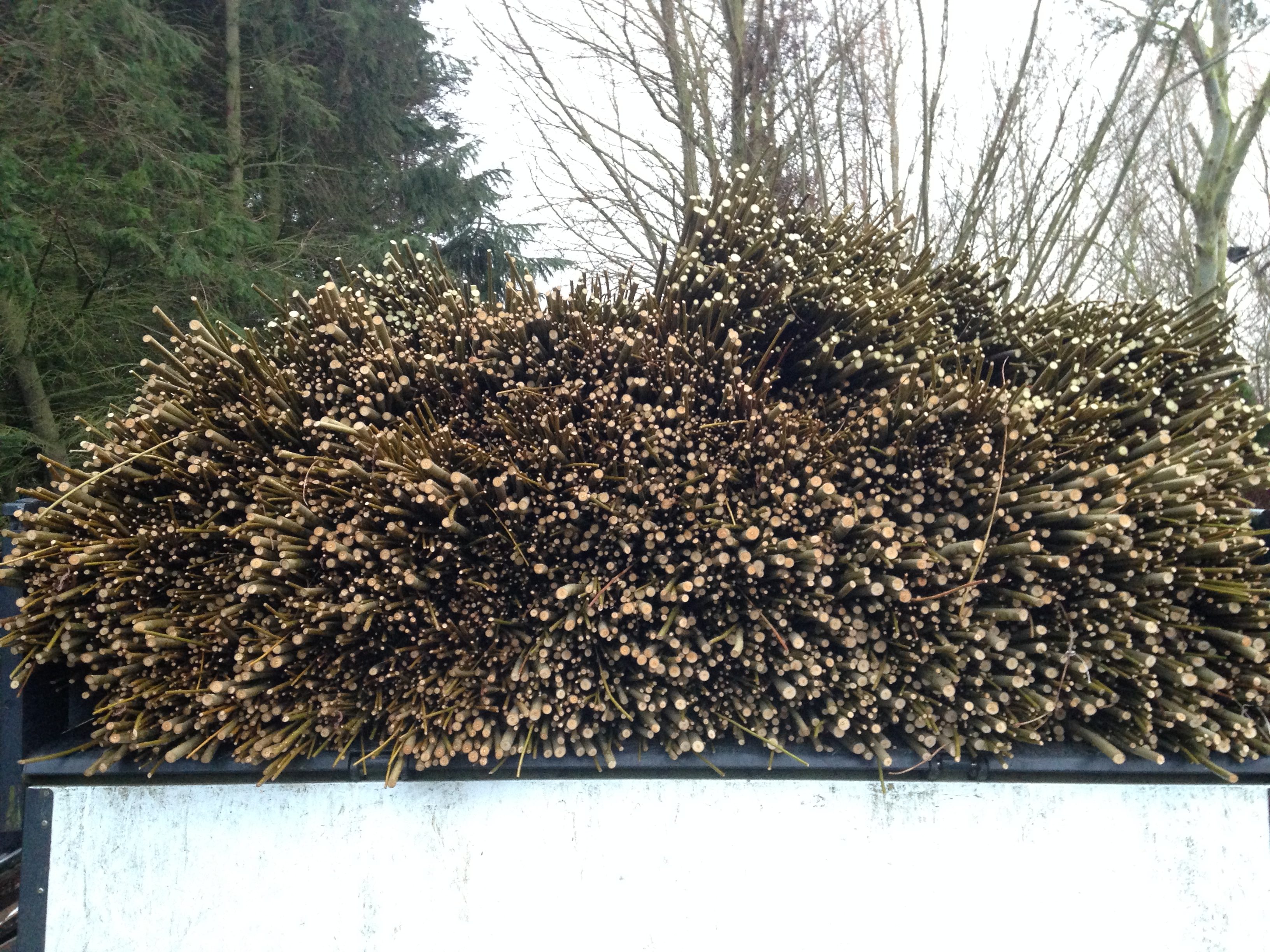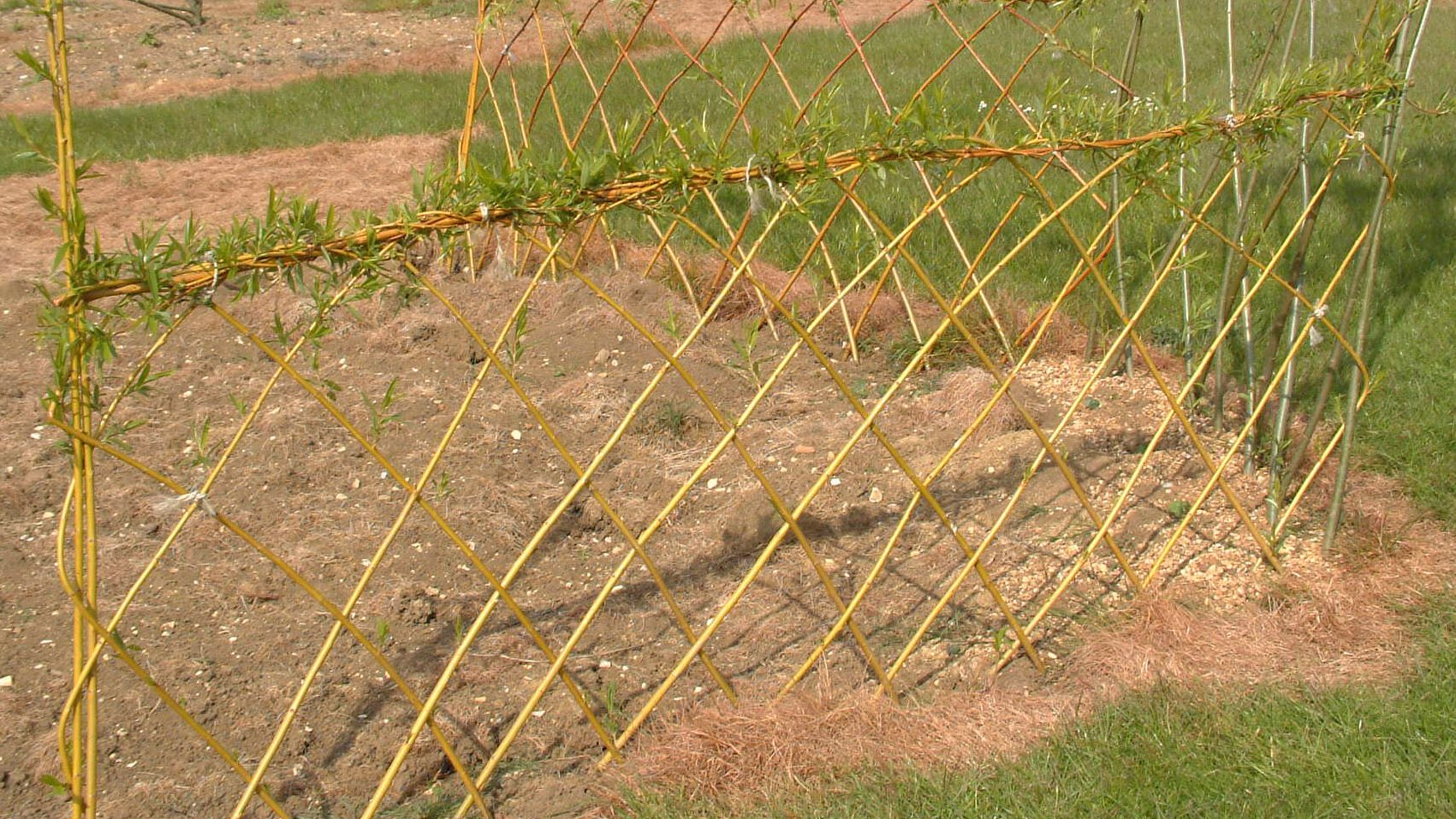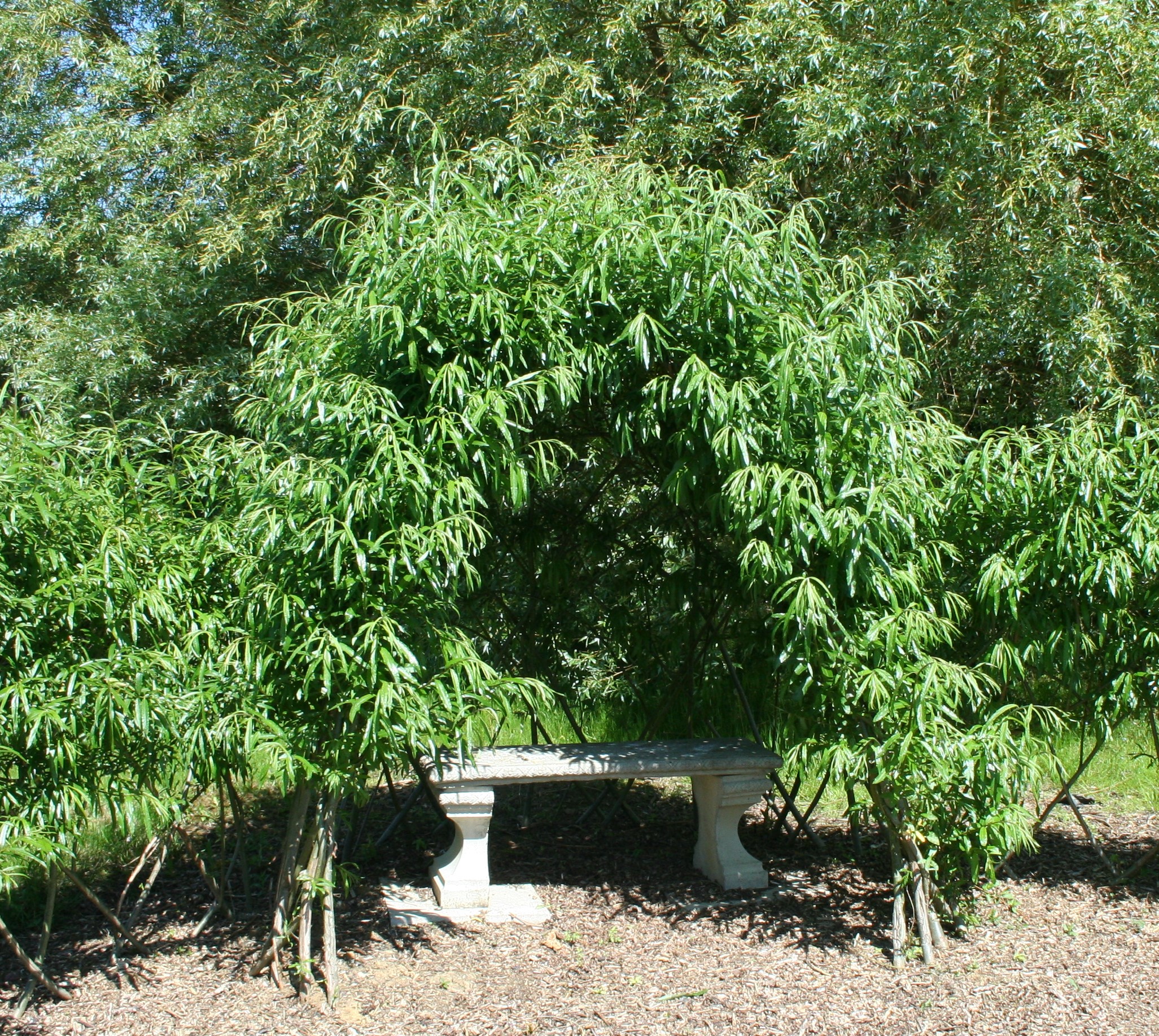Please Note : Living willow orders are only available
for delivery and planting from early December to late February.
Please Note : Living willow orders are only available
for delivery and planting from early December to late February.
OUR NEXT LIVING WILLOW SEASON WILL BE
FROM LATE NOVEMBER 2024 to LATE FEBRUARY 2025.
Please email anne@willowsnursery.co.uk if you would like us to
let you know when we are ready to start taking orders.
OUR NEXT LIVING WILLOW SEASON WILL BE
FROM LATE NOVEMBER 2024 to LATE FEBRUARY 2025.
Please email anne@willowsnursery.co.uk if you would like us to
let you know when we are ready to start taking orders.
GENERAL PLANTING ADVICE FOR LIVING WILLOW STRUCTURES :
Willow roots easily when you plant freshly cut willow (long whips or short cuttings)
in the ground in Winter.
So, to put it simply, when you order willow whips you will receive a bundle of
‘sticks’ !
But push them in the ground and you can create attractive, environmentally friendly, practical structures to form dens, tunnels, shaded seating areas and
much more !
If you buy one of our living willow structure kits you will receive full printed instructions with the willow – but, if you are at the early stages of thinking about living willow structures, you may find the following useful :
To grow willow from unrooted cuttings or whips, the willow should be cut and planted after leaf fall and before leaf bud – that would usually mean early December to late February/early March.
Long unrooted willow cuttings (whips) can be used to make functional and attractive structures/barriers in the garden that grow and develop throughout the years as well as the seasons.
For example, woven screens, arbours or bowers over seats, arches, tunnels, children’s play domes (which could be interconnected with tunnels if you have the space).
You do not need to be especially creative and even the simplest structure can look very impressive. There are no rigid rules to follow – just handy guidelines – and once you have made your first living willow structure you will have your own ideas.
Any variety with sufficient growth can be used but the faster growing varieties that produce long straight whips are best especially for larger structures. Viminalis varieties are probably the most suitable but others can be used for varying stem colour/leaf/catkin interest within the structure.
We only offer long whips of Salix Viminalis ‘Bowles Hybrid’ for living willow structures – as they easily produce long, straight unbranched whips in one season
of growth.


SITE PREPARATION :
An ideal soil would be a good moist loamy one, but Willow will do well in most soil conditions. The planting site should be dug over, cleared of weeds and grass with fertiliser/manure added if appropraite. If the soil has a tendency to dry out quickly organic matter should be added. We have a heavy clay soil which we have improved with farmyard manure where the willow beds have been planted and they grow very well. Planting through an appropriate membrane or good mulch will help in weed control later on but is not essential. Tree guards can be used if you have a particularly bad problem with hares, rabbits or deer.
Woven/Criss Cross Fedges (living fences/hedges – hence ‘Fedge’) :
Push unrooted whips at least 6 inches (15cm) into the ground at an angle of 45 to 60 degrees about 12 inches (30cm) apart along the line of your required Fedge. Then go back the other way planting in between the first whips at a similar angle in the opposite direction. Either, just tie together* where they cross or, preferably, as you are planting, weave the whips ‘one in front, one behind’ and you will find you have a very rigid structure. You can then plant some verticals which you bend over to join each other to form arches, add some further weaving, create circular windows …………. whatever you wish.
NB. As an example, using 6 ft (1.8 m) long willow whips planted at an angle of around 45 degrees the basic height of the initial fedge will be around 4 ft (1.2 m) – but the willow will sprout growth which will easily double that height to provide a screen through the rest of the year.
Push the longest sturdiest whips at least 6 inches (15cm) into the ground vertically to make the main skeleton of the living willow structure, bend over and weave and tie together*. Then add diagonals interwoven for strength to create an open lattice interlinked feature where the tension of the willow generally holds the structure fairly rigid even before it roots.
* We provide biodegradable twine for initial securing – on the basis that pressure grafting and woven in new growth will then hold the structure securely after the first season. You can also use willow or synthetic ties.


For any living willow structure :
Whips should be pushed about 6 to 9 inches (15cm to 23cm) into the ground.
Vertically planted whips tend to sprout fresh growth only from the top, whereas diagonally planted whips should sprout along the full length giving a denser growth to the structure – so try to plant as many whips as possible at an angle.
Willow will start to sprout new growth in March/April. The new stems can be trimmed back or woven into the structure as you wish.
Maintenance :
For a willow structure to become established and to grow well, it is essential that you keep the base of the structure clear of weeds and grass – say 6 inches (15 cm) either side of the planted whips.
If there is a long dry spell during the first year of planting, please water the structure if at all possible – a good soak once a week is better than a watering can full every day.
Once the new growth is long enough, it can be (and much should be) woven into the original structural framework (again, as diagonally as possible will help form a more dense structure).
Some of the whips that are not woven in may become quite long and thick and it may be necessary to trim these off before the winter tidy – it is especially important that this is done to any such whips growing on the top of the structure, as their weight could weaken it.
Please visit our How to make . . . . . pages that show how easy living willow structures
are to make (and also to see more photographs of completed structures).
Please visit our Living Willow Kit Prices page for full details of the kits we offer – they include all of the willow whips needed
to make straightforward simple structures, biodegradable twine for initial securing and detailed planting instructions.
Or visit our Other Willow Prices page if you have your own design ideas and would like to order whips individually.
Please also see our FAQ’s page for further information and advice.
There are photographs of living willow structures throughout our website, but you can see more in our
Living Willow Dome & Bower Gallery, Living Willow Tunnel Gallery and Living Willow Fedge Gallery.